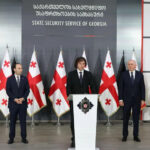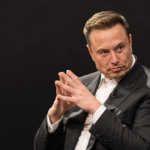**NATO Members Plan to Increase Defense Spending**
European NATO foreign ministers are discussing a plan to increase the alliance’s defense spending target. According to the Financial Times, they want to raise the spending level from 2% of their GDP to 3% by 2030.
This change comes after Russia‘s full-scale invasion of Ukraine highlighted manufacturing and procurement bottlenecks in Western countries. The alliance wants its members to increase spending to 2.5% of GDP before reaching 3% by 2030.
Currently, 23 NATO member countries meet the 2% spending level. However, some countries like Spain and Italy are still failing to reach this benchmark. Officials plan to agree on the new target during next summer’s summit in The Hague.
**Challenges Ahead**
Some countries may face challenges in increasing their defense spending due to fiscal pressure. Italy is already under the EU’s Excessive Deficit Procedure, which makes it difficult for them to reduce their deficit and increase military spending simultaneously.
Mark Rutte, the newly appointed NATO chief, said that “politics is making choices in scarcity” and there is always a lack of money and too many priorities.
**U.S. Influence**
The upcoming U.S. presidency of Donald Trump could also impact NATO’s defense spending plans. Trump has long advocated for NATO allies to increase their defense spending and had hinted at plans to reduce aid for Ukraine.
**Other Developments**
In other news, a Ukrainian court sentenced Vyacheslav Volodin, chairman of Russia’s State Duma, in absentia to 15 years. French Ambassador to Ukraine Gael Veyssiere expressed confidence that France’s policy of assistance to Ukraine would remain unchanged despite the change in prime minister.
The EBRD’s new Ukraine Recovery and Reconstruction Guarantee Facility will help small and medium businesses with land-based transport risks.
Russian state-owned oil company Rosneft finalized a landmark agreement to supply 500,000 barrels of oil daily for the next 10 years.
Read More @ kyivindependent.com













